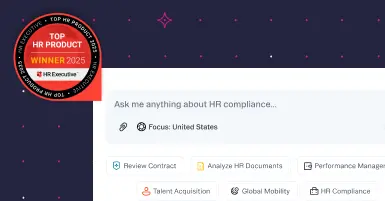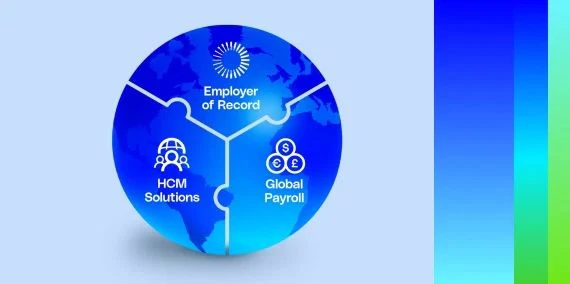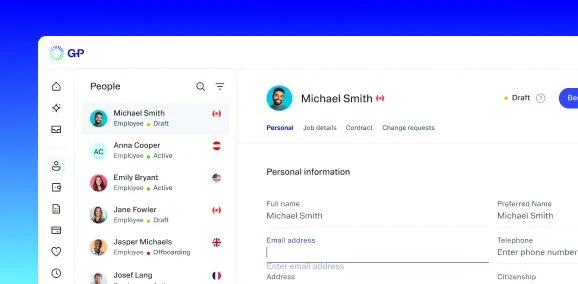Global payroll is the foundation of an international workforce. It ensures every employee is compensated on time and in compliance with local laws.
Managing international payroll requires more than a good tech stack — you need precision and compliance expertise. If you're expanding your business, a global payroll strategy can help you manage international employees with confidence.
What is global payroll?
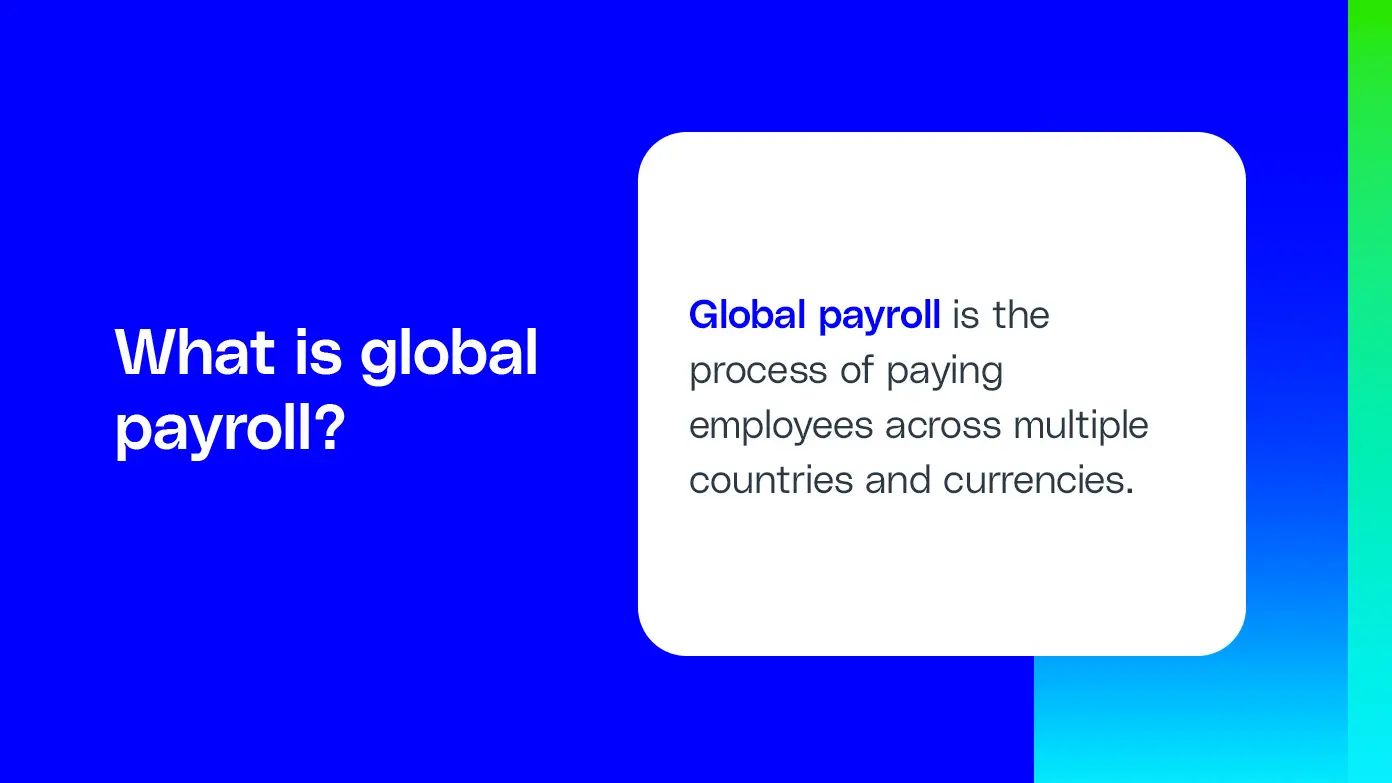
Global payroll is the process of paying employees across multiple countries and currencies. It involves managing salary, taxes, benefits, and compliance with each country's labor laws.
Managing payroll for international employees requires keeping up with shifting tax codes, social contributions, and employment regulations. A strong global payroll system should:
-
Reduce manual work.
-
Mitigate errors.
-
Protect your company from risk.
-
Provide visibility into expenses, timelines, and processes to keep your global team on track and productive.
A strong global payroll solution keeps you compliant and supports your team. It integrates with your tools, automates key tasks, and updates in real time. You control every payroll cycle from one dashboard. You stay on schedule, and your teams receive the right pay, in the right currency, right on schedule.
Payroll should be seamless, wherever your team is.
Global payroll vs. local payroll
A well-rounded global payroll system scales with your business, centralizes control, and adapts to new markets. Global paychecks require:
-
Navigating varying labor laws and tax requirements
-
Providing location-specific benefits and entitlements
-
Converting wages across currencies and exchange rates
-
Processing payments through local banks and systems
-
Ensuring data security and compliance in each region
Local payroll is limited to one region. It requires:
-
Following national labor laws and tax rules
-
Managing a single currency and benefits structure
-
Working with local payroll vendors or technology
-
Meeting local deadlines and reporting formats
-
Handling compliance on a country-by-country basis
What are the top challenges of global payroll?
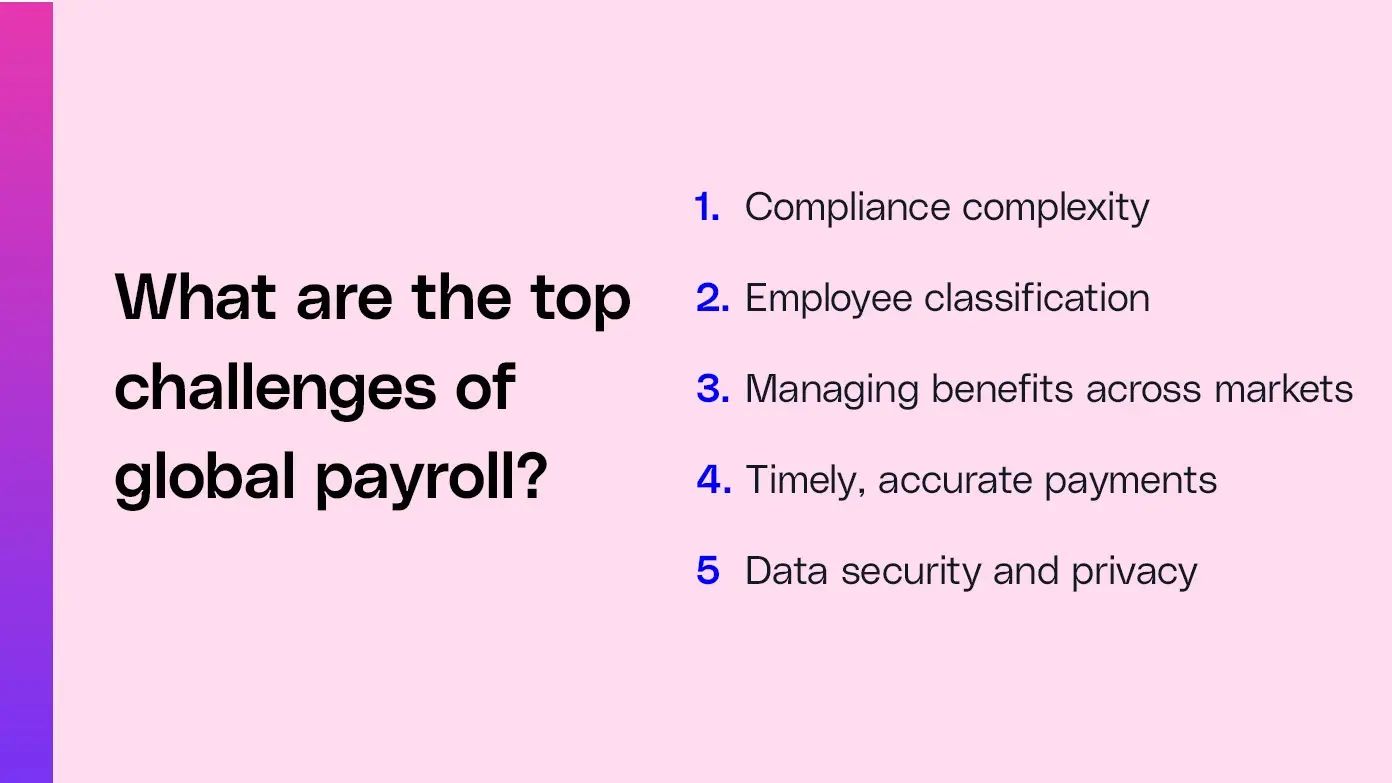
Managing payroll across global markets is complex. Regulations shift fast, and errors are costly. With finance, HR, and legal stakeholders involved, clarity is nonnegotiable. Here are the top five payroll challenges in global hiring — and how the right partner can solve them.
1. Compliance complexity
Each region has different rules, making it difficult to navigate tax laws and local requirements. Without in-country expertise, managing contribution rates, overtime policies, and minimum wage laws is tricky.
A global employment platform with embedded legal support helps ensure you meet evolving statutory requirements without added internal burden.
2. Employee classification
Classifying contractors as employees or vice versa can trigger audits, fines, and reputational risk. Compliance documents will not shield your operations from penalties if your work arrangements contradict what's on paper.
Contractors use invoicing, and employees are on payroll, so you should find a provider that covers both. Working with a smart employer of record (EOR) allows you to adjust worker classification by role and country — all in one place.
3. Managing benefits across markets
Sick leave, pension requirements, maternity leave, and health insurance vary from country to country.
In France, for example, a percentage of employee income is taxed to fund a gratuity pension program. Calculation missteps can damage trust, delay payroll, or cause legal exposure. Finance, HR, and legal teams need a unified view to stay aligned.
The right global employment platform helps you offer compliant, competitive benefits globally, without building separate systems for each country.
4. Timely, accurate payments
Global teams require payments in multiple currencies and countries. Fluctuating exchange rates and transfer delays affect timing and accuracy. Some banks also charge additional fees. Late or incorrect pay damages retention and compliance. Errors in exchange rates, time zones, or currencies can also snowball into larger financial risks.
Use a global employment platform to automate payroll across regions. Ensure local currency payments are timely, accurate, and scalable, backed by in-country support and real-time compliance checks.
5. Data security and privacy
Sensitive payroll data must be protected. With cross-border teams, you're subject to multiple privacy laws, including the European Union's General Data Protection Regulation (GDPR), the Personal Data Protection Act (PDPA) in Singapore, and the German Federal Data Protection Act. Many companies lack the in-house legal resources to manage these regulations.
Choose a reliable global employment platform that follows frameworks such as Systems and Organization Controls 2 (SOC 2) and is ISO 27001-certified. You also want to prioritize enterprise-grade security, multifactor authentication, and single sign-on to protect your people and data.
How to implement and improve international payroll processing
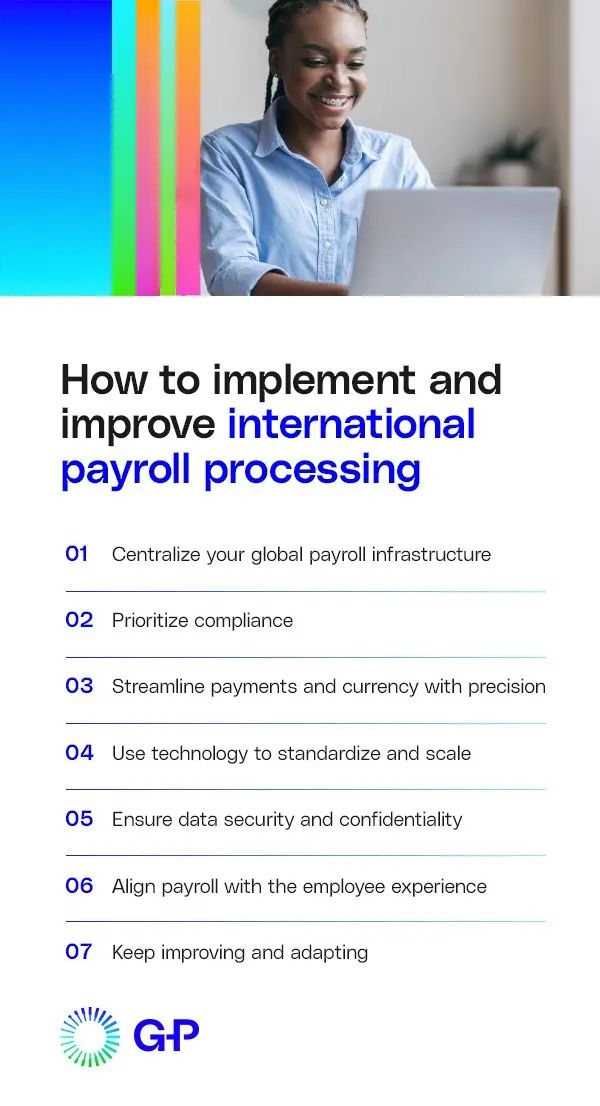
Global payroll isn’t just an HR exercise. It requires synchronized effort across legal, compliance, finance, IT, and leadership teams.
Here's an overview of how to streamline international payroll processing:
-
Map legal and tax requirements per country.
-
Set up your tech stack.
-
Draft global-local payroll policies.
-
Establish payroll funding and payment channels.
-
Test your payroll system in a few pilot markets.
-
Roll it out globally.
-
Review the system and iterate.
You can skip these requirements with a global employment platform. Pay your teams anywhere, free up internal resources, and lower your risk while getting real-time insights, transparency, and consistency.
1. Centralize your global payroll infrastructure
To hire and pay global employees, you need a legal foundation. There are three main options:
-
Internal payroll management: Internal payroll management refers to in-house processing. It requires in-depth knowledge of local laws and taxes, which can create liabilities. It also means you need a registered business in each country. This gives you full control over payroll, contracts, and compliance. The process, though, is slow and complex, requiring tax registration, local banking, and legal counsel.
-
Local payroll processing company: A payroll processing company is a third-party company that manages the mechanics of payroll, such as calculations, disbursement, and reporting. It reduces the operational load but still requires your company to have legal entities in each country. You also remain liable for compliance, taxes, and labor law adherence. Support is limited beyond payroll processing, especially for hiring and onboarding.
-
Employer of record: A global EOR acts as the legal employer on your behalf. You retain control of employees' daily work, while the EOR manages contracts, taxes, benefits, and payroll in full compliance with local laws. You don't need to set up an entity with an EOR. Instead, you get fast global hiring, full legal compliance, and integrated HR, payroll, and benefits management. This option delivers unmatched speed, simplicity, and peace of mind. Combined with AI-powered tools, it also empowers your business to scale faster and smarter.
2. Prioritize compliance
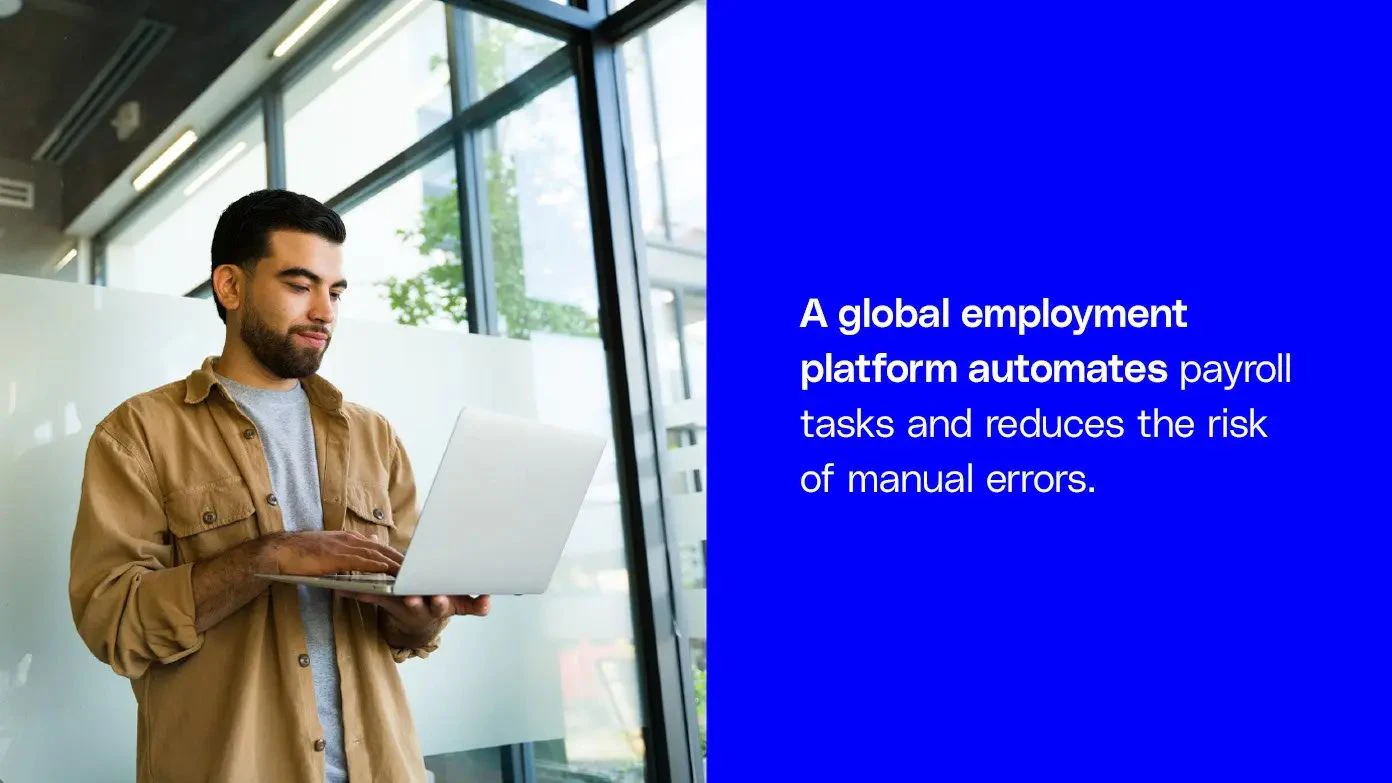
Every country has rules governing taxes, social contributions, holiday pay, notice periods, and more. Failure to follow them can lead to audits, fines, or blocked operations. Start by understanding local labor laws and identifying required deductions, filing deadlines, and payment frequencies. Ensure that all contracts adhere to these regulations, and track changes across all locations. It's important to track:
-
Global labor expenses by region
-
Compensation, equity, and anomalies
A global employment platform helps you stay compliant with payroll regulations anywhere in the world. It automates payroll tasks and reduces the risk of manual errors. A global employment platform also monitors local compliance on your behalf, ensuring everything aligns with current laws.
3. Streamline payments and currency with precision
International payroll requires accurate currency conversion and timely delivery. Delays frustrate employees, create tax issues, and reduce trust. Working with a provider that ensures localized payments ensures employees receive funds correctly. Partner with a provider that locks exchange rates in real time to protect you from fluctuations and surprise expenses. Clear conversion logs and payout receipts support compliance and transparency.
4. Use technology to standardize and scale
Manual processes lead to delays, duplicate work, and errors. Look for a provider that supports multiple currencies and global locations. A strong global employment platform lets you onboard, pay, and manage employees from a single dashboard. It enables real-time reporting, so you have visibility into labor expenses across markets. This supports better budgeting, forecasting, and planning.
Define consistent frameworks for each region and establish:
-
Payroll frequency
-
Payment methods
-
Payslip formats and transparency
-
Mandatory deductions
5. Ensure data security and confidentiality
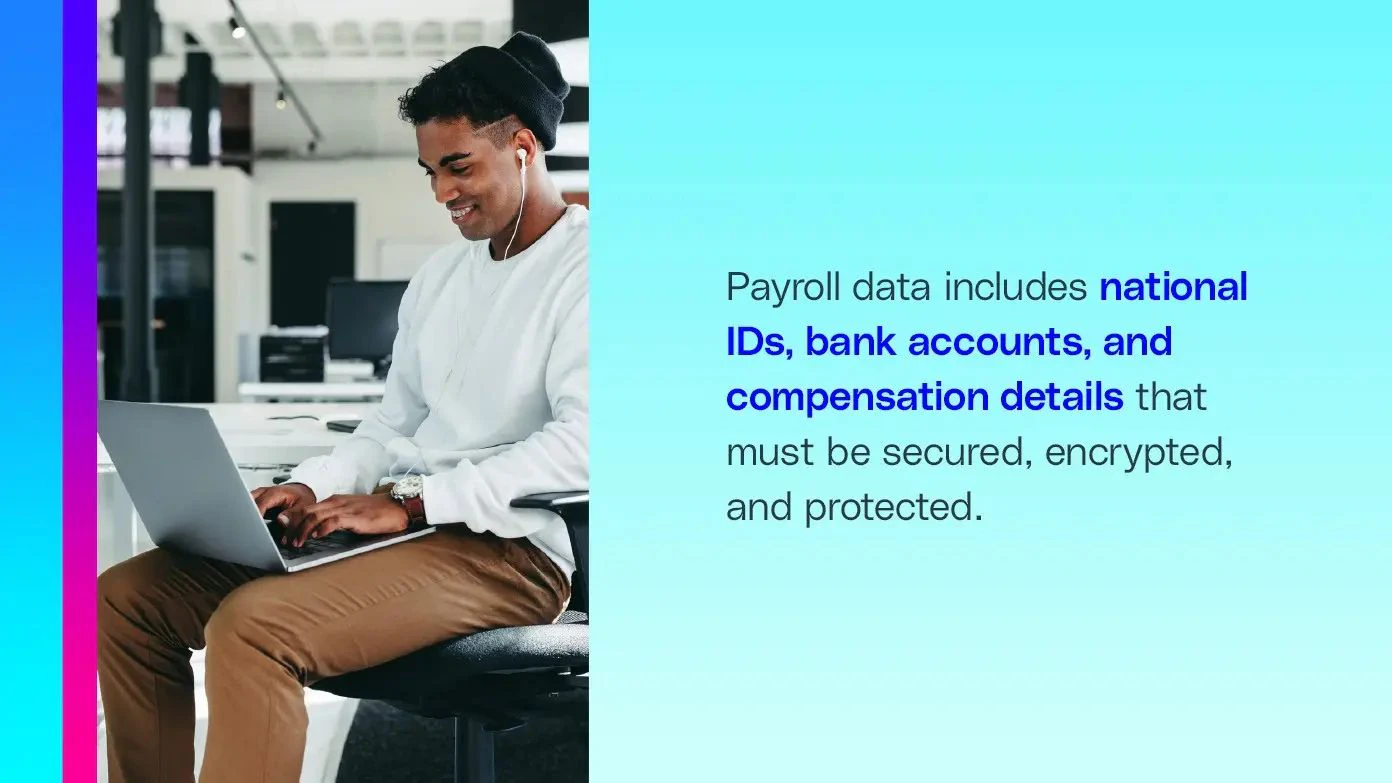
Payroll data includes national IDs, bank accounts, and compensation details that must be secured, encrypted, and protected. Follow GDPR or other applicable frameworks to stay compliant, limit access to authorized team members, and store information in secure, certified systems with role-based permissions. Train internal teams on handling data and access policies, and remember — every click and upload matters.
6. Align payroll with the employee experience
Payroll is part of your employer brand. Timely, accurate pay builds confidence and long-term employee loyalty. Give employees access to their pay data and allow them to view payslips, tax forms, and benefits in one place. Offer support in their preferred language and time zone.
More ways to align payroll with the employee experience include:
-
Clearly communicating how pay is calculated
-
Proactively explaining regional payroll differences
-
Offering region-specific benefits
-
Providing early notification of payroll adjustments, bonuses, or delays
-
Letting employees update bank info, view documents, or track benefits via self-service workflows
-
Offering flexible compensation options, such as cash bonuses or a wellness stipend
7. Keep improving and adapting

As your company changes, so do your needs. Flexibility and communication are critical to building trust with employees and improving your operations. Add new locations, roles, and benefits while conducting regular audits to find potential errors and gaps. Measure the system's success by payroll accuracy, cycle time, and employee satisfaction. Set goals for continuous improvement, and keep feedback loops open with your finance and HR teams to refine the payroll strategy.
How to ensure global payroll processing complies with local regulations
Compliance looks different in every country, and it changes often. To stay ahead, focus on structure, expertise, and precision at every step:
-
Work with in-country experts who understand local tax codes, labor laws, and mandatory benefits.
-
Use a platform that tracks regulatory changes and updates workflows automatically to reflect new requirements.
-
Establish clear audit trails for every payroll run, including filing, payment confirmations, and approvals.
-
Classify workers correctly from the start to reduce penalties, back pay, and legal exposure.
-
Store and streamline data according to local privacy laws, including GDPR and similar frameworks in other regions.
-
Standardize global processes while allowing for local variations in pay cycles, deductions, and reporting.
-
Document every employment term in locally compliant contracts, reviewed by regional legal advisors.
-
Schedule regular compliance reviews to catch gaps, reduce risk, and align with evolving laws.
An AI-powered global HR agent, such as G-P Gia™, can answer your toughest compliance questions across 50 countries and 50 U.S. states. Use Gia to get trusted guidance across multiple jurisdictions and navigate complex legal landscapes with ease. Gia's Verified Sources ensure you get accurate information regarding regulatory changes impacting benefits, pay, and deductions.
What is a global payroll provider, and how can they help?
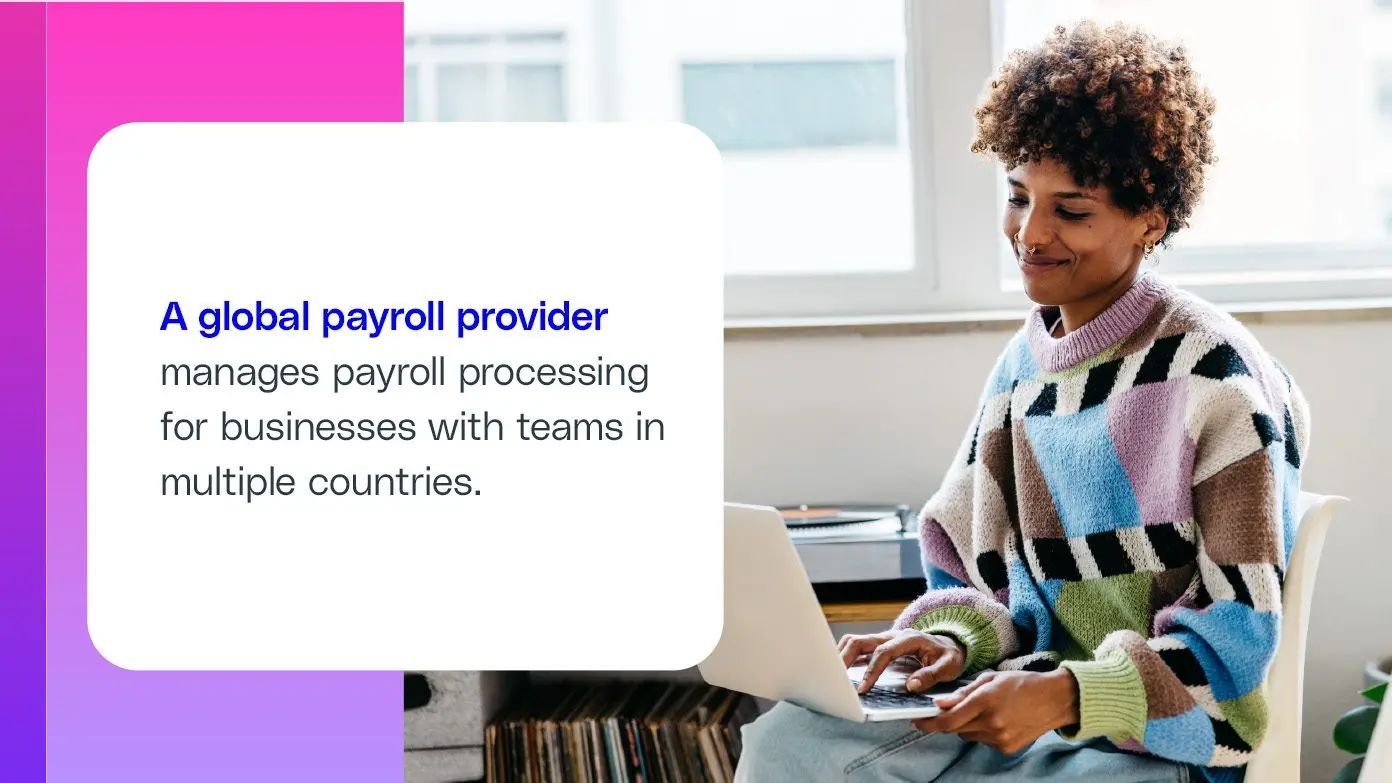
A global payroll provider manages payroll processing for businesses with teams in multiple countries. It ensures employees and contractors are paid accurately, on time, and in full compliance with their local laws. Instead of juggling local payroll providers in each country, you can use one global employment platform to centralize payroll operations. For example, if you hire developers in Brazil, designers in Germany, and a sales team in Singapore, a global employment platform can streamline payroll, calculate taxes, process payments, and manage required filings for each location. Global employment platforms also manage:
-
Statutory benefits
-
Fringe benefits
-
Currency conversion
-
Data security
This support helps mitigate legal risk, reduce administrative overhead, and improve employee experience globally. Whether you're entering a new market or scaling a remote team, a global payroll provider gives you control without the complexity.
Should you work with a global payroll partner?
Working with a global payroll provider is a smart choice, especially for fast-growing businesses in industries such as tech, e-commerce, professional services, and manufacturing. Startups and mid-sized businesses can also benefit from this model to enter new markets quickly and legally.
For example, a software company hiring developers in Poland, support teams in South Africa, and marketers in Spain can manage payroll through one global partner instead of managing partnerships in each region. A global payroll provider saves time, reduces expenses, and improves accuracy. It also helps maintain a consistent employee experience across countries.
How do you choose a global HR payroll provider?
Choosing the right provider is critical. Look for partners with:
-
Real-time reporting
-
Localized support
-
A technology-driven approach
-
Strong global payroll compliance systems
-
Proven infrastructure
-
AI-powered insights
-
Support for employees and contractors
-
Reliable security standards
-
Transparent data handling practices
-
A track record in your target countries
Why trust us
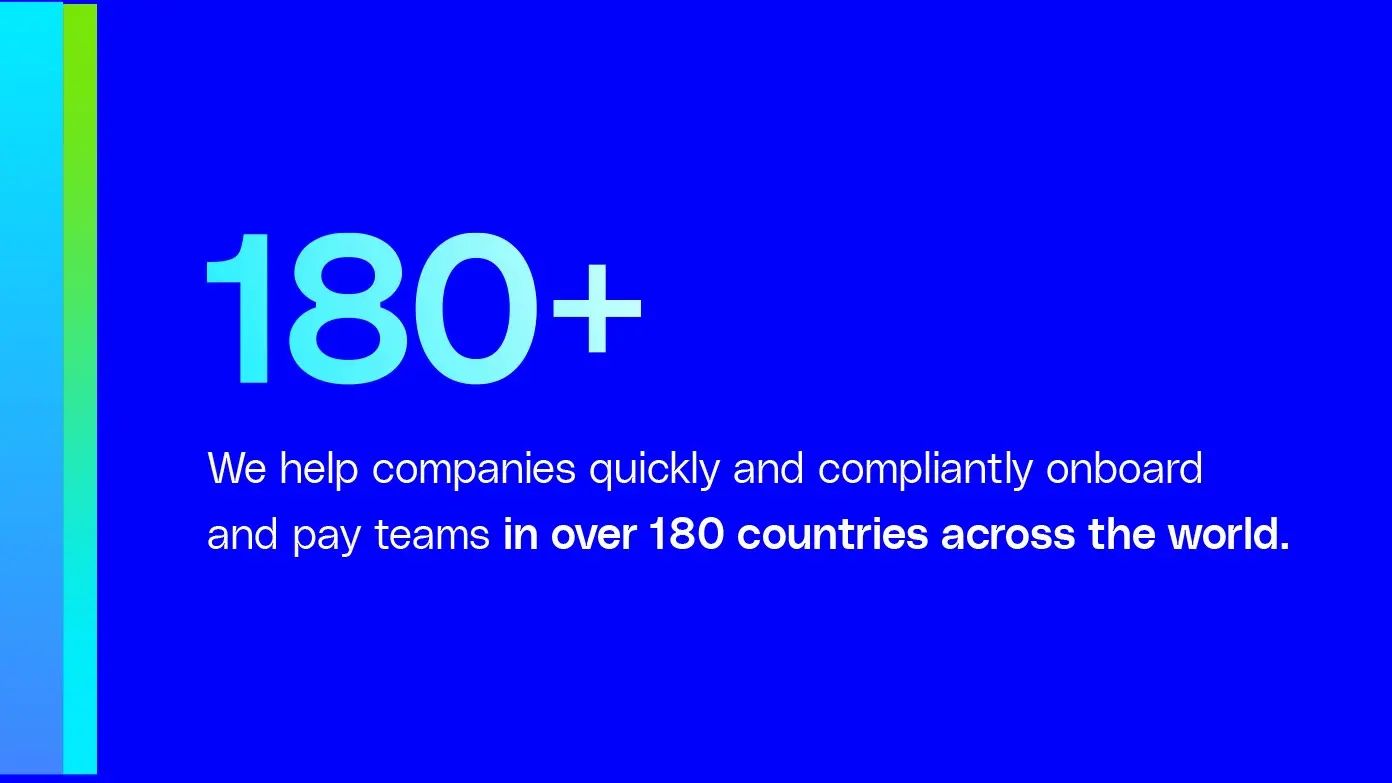
G-P™ is the industry leader in global employment. We streamline the entire employee lifecycle, including payroll, so you can build your team anywhere. We help companies quickly and compliantly onboard, pay, and manage teams in 180+ countries.
Our global employment platform is built on deep legal expertise, powerful technology, and a global partner network. With a 96% customer satisfaction rating, we're trusted by startups, mid-sized businesses, and enterprises alike. G-P upholds compliance with these standards:
-
California Consumer Privacy Act (CCPA)
-
GDPR
-
ISO 27001
-
ISO 27001 SoA
-
SOC 2
Our team of HR and legal experts monitors and applies local regulations so you don't have to. We're consistently named the #1 EOR by top industry analysts like NelsonHall, IEC, and QKS.
Streamline global payroll management with G-P
Simplify payroll for global teams with a best-in-class EOR like G-P. Automate compliance, streamline pay cycles, and support all your teams, without the need to establish local entities.
G-P makes each step of the payroll management process quick and easy with our global employment products and EOR solutions. Pay your team with confidence anywhere in the world in 150+ currencies with our 99% on-time payroll solution.
Contact us to learn more.


